Physical Address
304 North Cardinal St.
Dorchester Center, MA 02124
Physical Address
304 North Cardinal St.
Dorchester Center, MA 02124
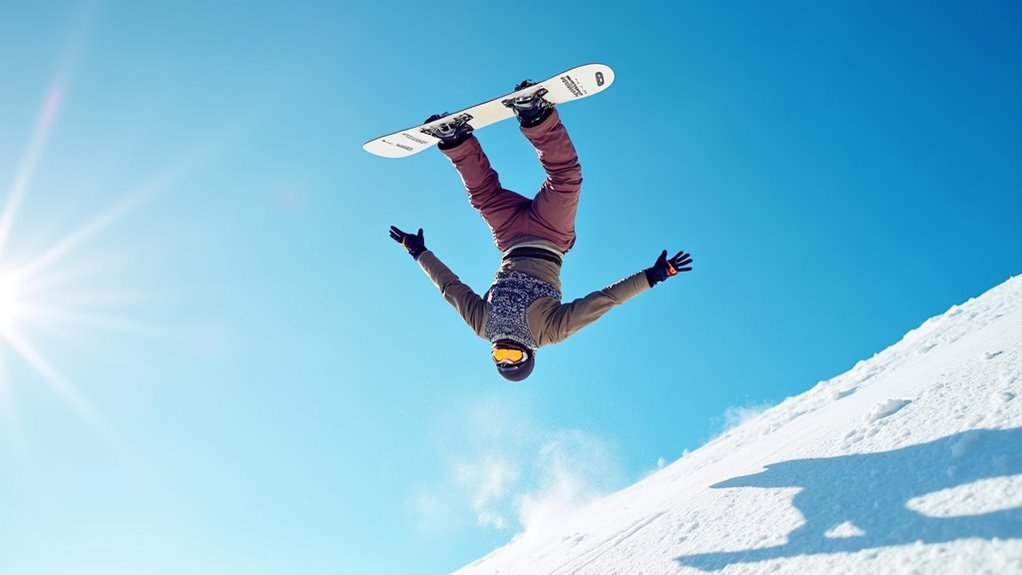
Transform your snowboarding with essential backflip techniques that separate successful riders from painful crashes—but these prerequisites might surprise you.
You’ve probably watched snowboarders throw effortless backflips and wondered how they make it look so simple. The truth is, there’s nothing effortless about it—backflips require precise technique, proper progression, and a solid foundation of skills that most riders overlook. Before you even think about going inverted, you’ll need to master several prerequisites that separate successful attempts from painful crashes. Here’s what separates the riders who stick their landings from those who don’t.
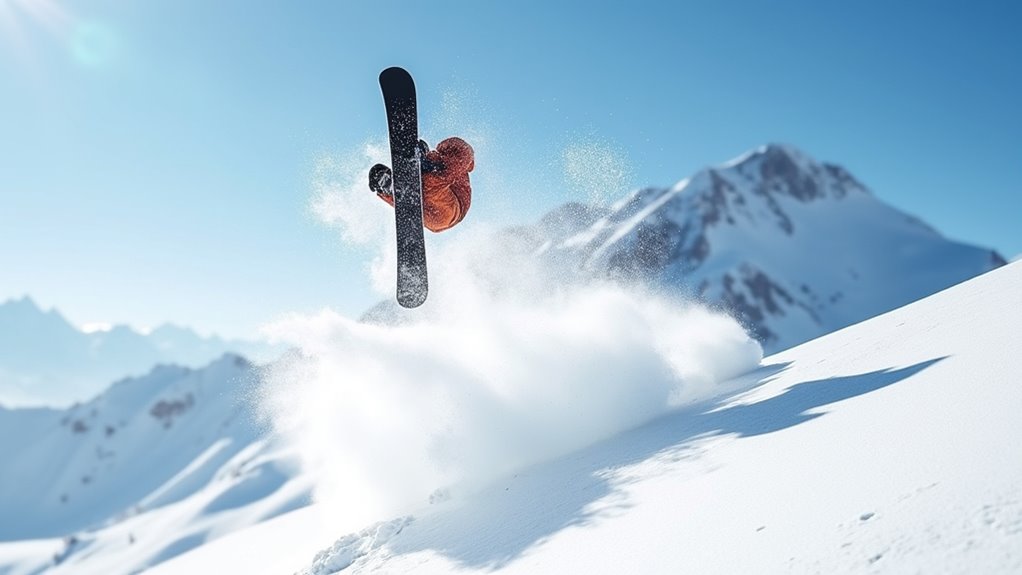
Before you even think about launching into your first backflip, you’ll need to master several fundamental snowboarding skills that form the foundation of this advanced trick.
You must be completely comfortable riding switch, carving confidently at high speeds, and executing smooth 180s in both directions. Your jump technique needs to be solid—you should consistently land clean straight airs and 360s without hesitation.
Perfecting your edge control is vital since you’ll need precise timing for takeoff. Practice riding fakie and work on your balance during landings, as backflips require exceptional board control throughout the rotation.
Don’t rush this phase. These prerequisite skills aren’t just helpful—they’re absolutely essential for safely attempting backflips. Master them completely before progressing to inverted tricks.
Plus, always carry a well-stocked first aid kit when practicing advanced tricks, as the risk of injury increases significantly when attempting inverted maneuvers on the mountain.
Once you’ve nailed the fundamentals on snow, you’ll want to develop your spatial awareness through trampoline training—it’s the safest way to learn backflip mechanics without the risks of mountain terrain.
Start with basic bouncing to get comfortable with airtime, then progress to tucked backflips. Focus on keeping your knees tight to your chest and spotting your landing by looking for the trampoline bed. Practice the motion repeatedly until it becomes muscle memory.
Work on controlling your rotation speed by adjusting how hard you throw your arms back and how tightly you tuck. You’ll also want to practice different grab positions while flipping to simulate snowboard movements.
Spend several sessions mastering these skills before attempting anything on snow. Your body needs to understand the flip sequence instinctively.
Consider taking your newfound aerial skills to different environments by exploring caravan camping adventures near mountain resorts where you can practice in various outdoor settings.
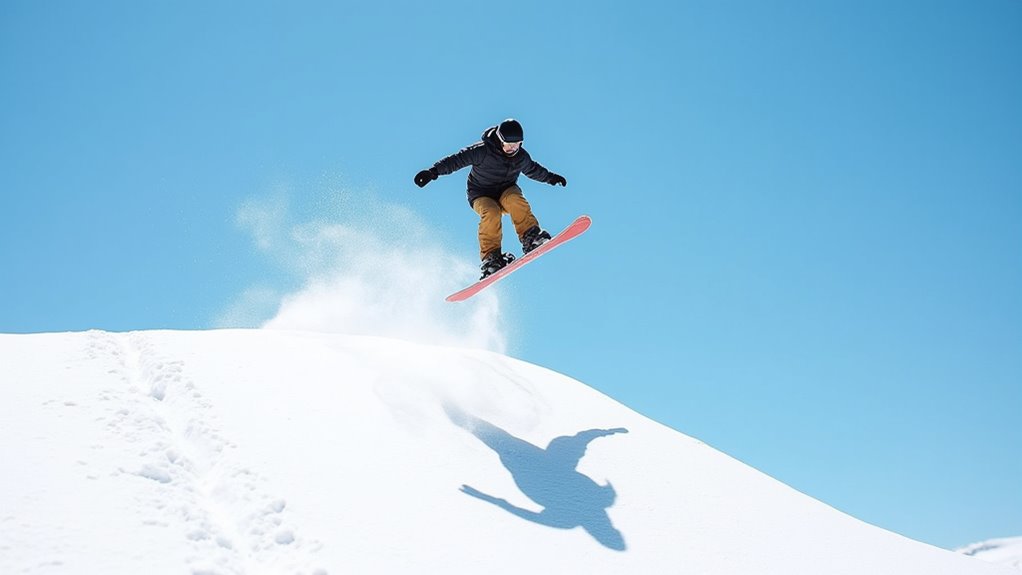
When you’re ready to take your backflip from trampoline to snow, your approach speed becomes the make-or-break factor that’ll determine whether you stomp the landing or face-plant into the slope.
Finding your sweet spot requires careful calibration. Too slow, and you won’t complete the rotation. Too fast, and you’ll over-rotate or lose control entirely.
Here’s how to dial in your approach:
Practice this progression methodically, and you’ll develop the muscle memory needed for consistent backflips. Just as backcountry snowboarders rely on essential camping utensils for outdoor meal preparation, having the right equipment and preparation is crucial for executing advanced tricks safely.
While nailing your approach speed sets you up for success, the real magic happens when you understand what’s actually occurring during your rotation.
When you initiate your backflip, you’re creating angular momentum by throwing your arms and shoulders backward while compressing your knees toward your chest. This tucked position reduces your moment of inertia, making you spin faster—just like figure skaters pulling their arms in during spins.
Your center of mass follows a parabolic trajectory while your body rotates around it. The key is generating enough rotational force at takeoff without over-rotating.
Once you’re airborne, you can’t add more rotation, only control your spin rate by adjusting how tightly you tuck. Understanding this physics helps you commit confidently and land successfully.
Just as Britain’s motorhomes showcase innovative designs for adventure enthusiasts, mastering snowboard backflips requires appreciation for the engineering principles that make complex maneuvers possible.
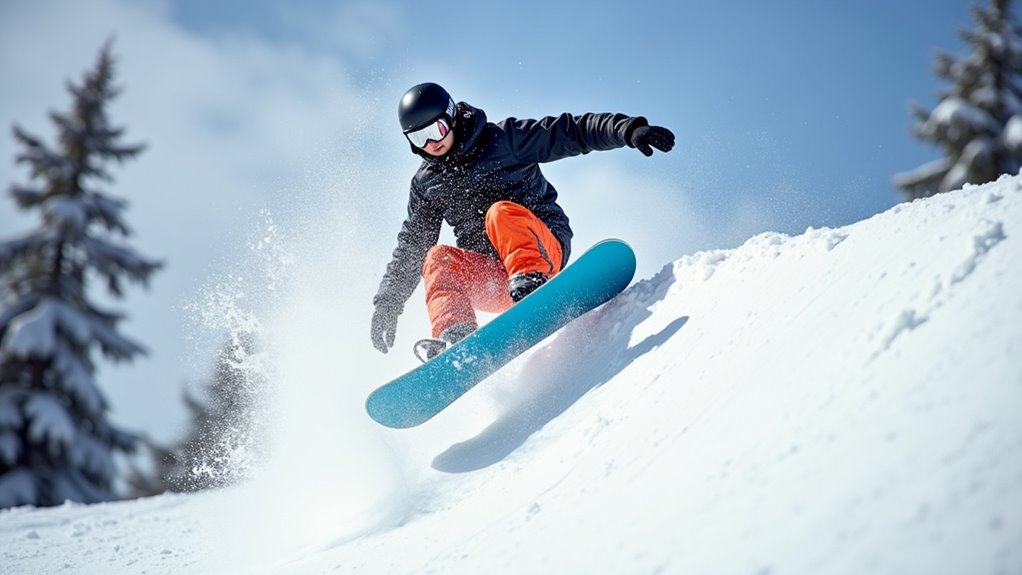
Before you attempt a backflip on a massive jump, you’ll want to master the movement in controlled environments where consequences are minimal. Quarter pipes offer the perfect training ground because they provide upward momentum while keeping you close to the snow.
Here’s your progression path:
Each step builds essential muscle memory while minimizing risk. Don’t rush this progression – solid fundamentals prevent injuries. When practicing these maneuvers during warmer months or in areas with mosquito activity, proper outdoor camping gear becomes essential for comfortable training sessions.
Once you’ve built confidence through proper progression, your success hinges on nailing the takeoff mechanics.
As you approach the jump, maintain a centered stance with knees slightly bent and eyes focused ahead, not down at the lip. The key is timing—initiate your backflip just as you reach the takeoff point, not before or after.
Throw your arms upward and slightly back while tucking your knees toward your chest. This creates the rotation you need.
Don’t overthink it or hesitate mid-approach; commitment is everything. Half-hearted attempts lead to awkward landings or crashes.
Keep your core engaged throughout the rotation and spot your landing early. Trust your preparation and let muscle memory take over.
Confidence in your takeoff translates directly to successful completion. Just like deciding whether to rent or buy equipment for any adventure sport, committing fully to your chosen approach is what separates successful attempts from costly mistakes.
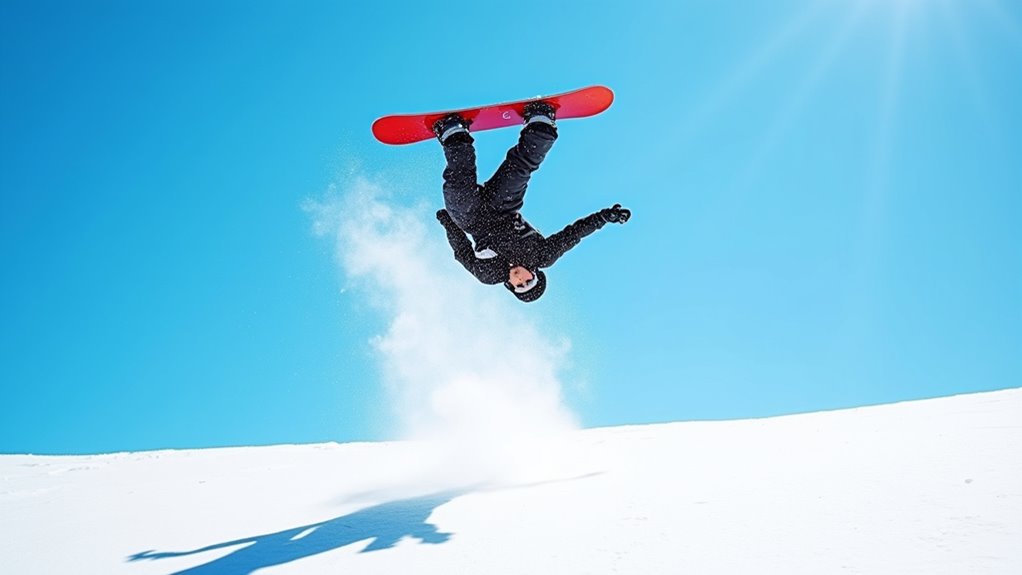
Fear is your biggest obstacle when attempting backflips, but you can conquer it through deliberate mental preparation. Your mind will create worst-case scenarios, so you’ll need proven strategies to override these instincts and build confidence.
Your mind will sabotage your backflip attempts with fear, but strategic mental preparation can override these limiting instincts and unlock your potential.
Mental preparation techniques:
Just as snowboarders need travel insurance to protect against potential injuries and medical expenses during their mountain adventures, having proper coverage gives you peace of mind to focus on perfecting your technique.
Even when you’ve conquered your mental barriers, technical errors can turn your backflip dreams into painful reality. The biggest mistake you’ll make is hesitating during takeoff—this kills your momentum and leaves you hanging upside down. Don’t throw your head back violently either; this creates an uneven rotation that’ll send you sideways.
Many riders also launch too early or too late off the jump. You need to hit the lip with proper speed and timing.
Another common error isn’t committing fully to the rotation. Half-hearted attempts result in under-rotation, causing you to land on your back or head.
Finally, don’t forget to spot your landing. Keep your eyes open during the flip’s final phase to prepare for touchdown. If you’re expecting, it’s especially important to avoid these risky maneuvers and focus on safer riding techniques instead.
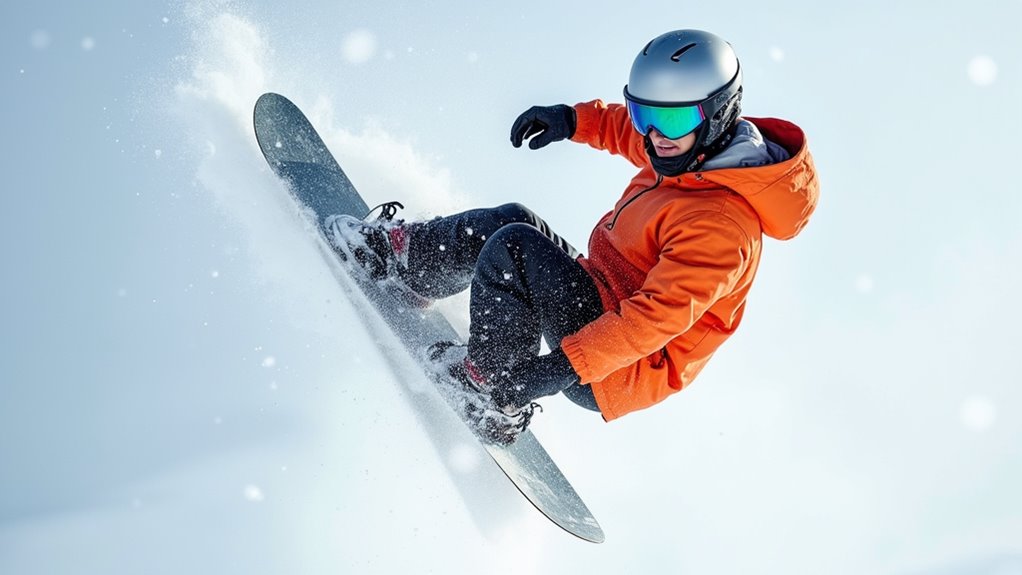
While mastering proper technique helps prevent crashes, the right protective equipment acts as your last line of defense when things go wrong. You’ll need extensive protection since backflips involve significant height and rotation forces.
Essential safety gear includes:
Don’t attempt backflips without mastering basic jumps first. Always practice on appropriate terrain with adequate snow conditions.
Consider taking lessons from certified instructors who can spot dangerous habits before they become ingrained.
You’ll transform from tentative boarder to fearless flipper through dedicated practice. Where once you’d hesitate at jump lips, you’ll now charge forward with confidence. Your tight, controlled tuck replaces wild flailing—precision over panic. That queasy stomach sensation becomes pure adrenaline rush. Instead of visualizing crashes, you’re spotting clean landings. Remember: every expert was once terrified of their first attempt. You’ve got the skills, now trust your preparation and commit fully to the rotation.